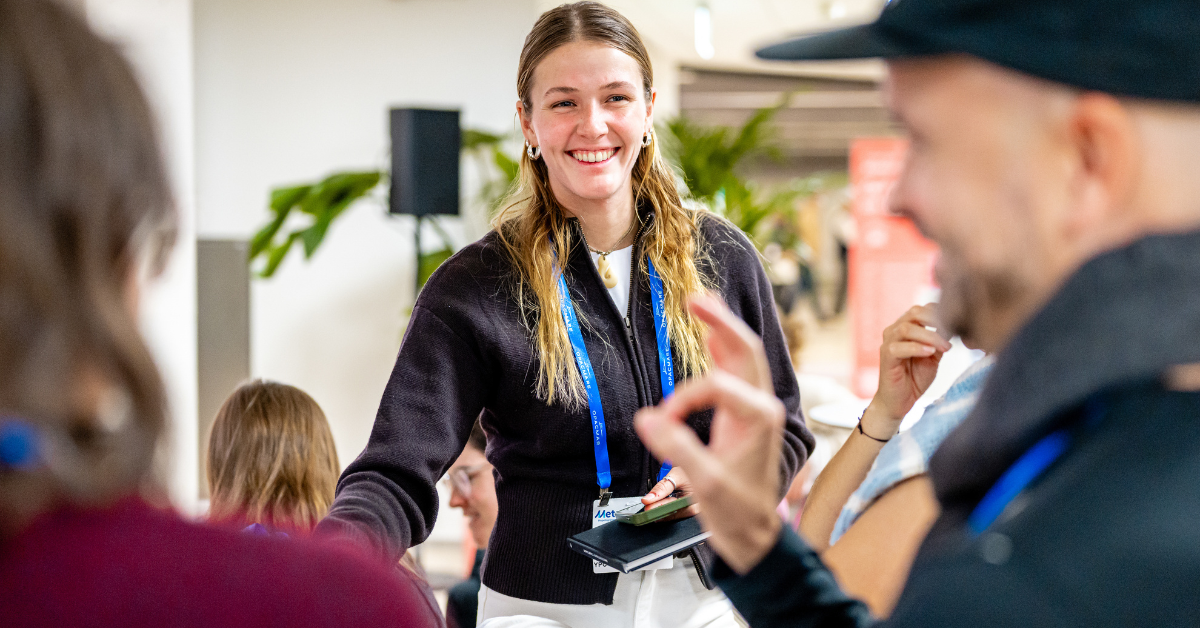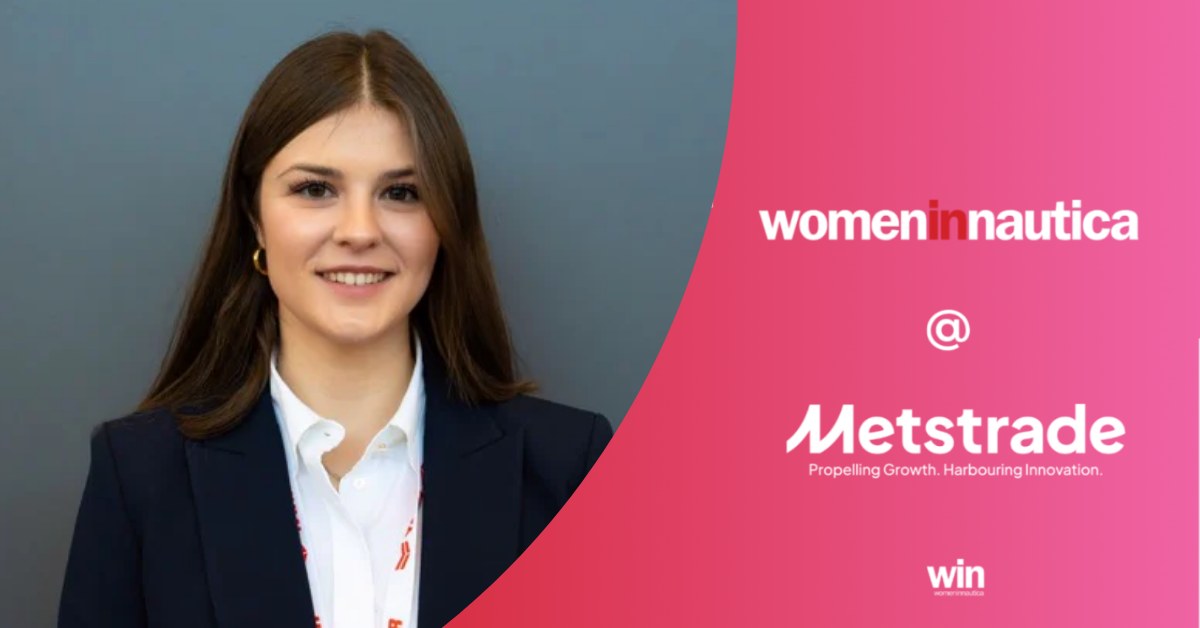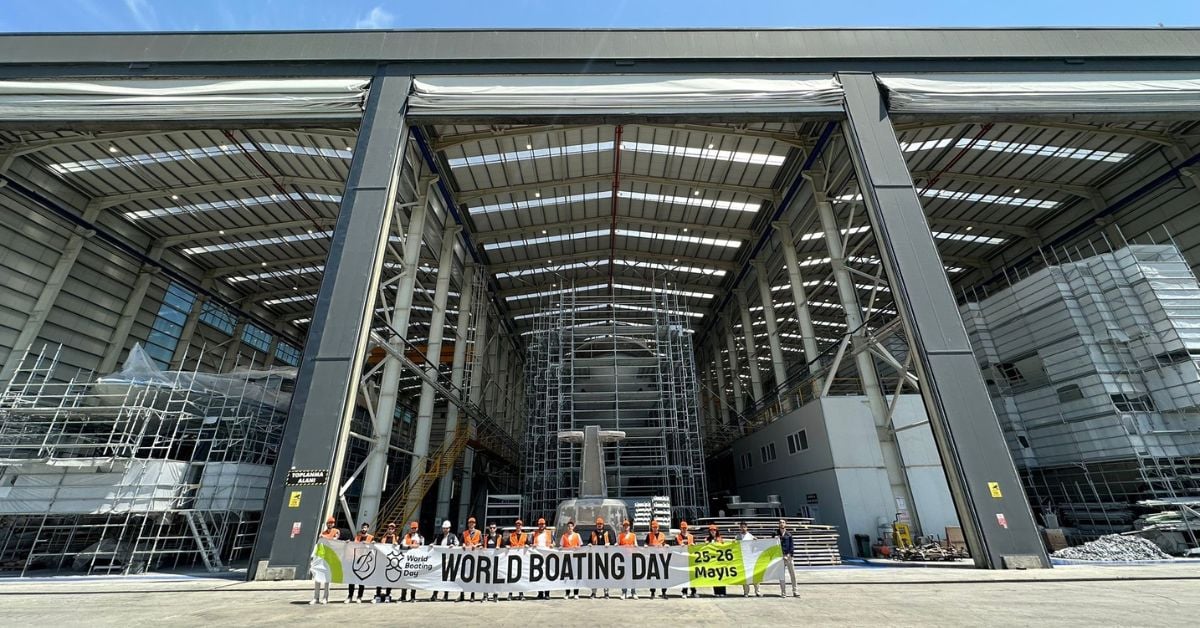Capturing the next generation’s view in yacht design
 Kim Hollamby
Kim Hollamby
In 2024 the DAME Design Awards featured a design student as a guest jury member for the very first time. The objective was to bring in a youthful perspective from someone also currently studying the very latest design techniques and theories. In this pilot exercise Metstrade approached a long-standing friend of the show, TU Delft university in the Netherlands, to run a recruitment campaign among its design student cohort.
Master’s student in integrated product design, Olaf Bouwens, was the candidate chosen and he proved to be an excellent addition to the 2024 jury. Here we catch up on his thoughts and experiences on the DAME and at Metstrade and discover the experience has potentially changed his future career path.
Tell us about your life as a master’s student and keen sailor
I started at TU Delft in 2018, choosing industrial design for my studies. As a little boy I was always designing and making things and that was something I wanted to pursue in my career. I’m also very interested in all types of techniques. If everything goes well, I will graduate on 12 September this year.I’d sailed all my life, grew up on a boat and did some races. However, at university I was able to join the Delft Challenge Sailing Team which took my competitive sailing to the next level. I sail on Zeeland waters and the North Sea when offshore racing, using a wide number of boats from J70s through to multihulls.
What is your master’s project?
I’m at the beginning of the project, so I’m still orientating the detailed direction of where I want it to go – but summarising I’m researching the creation of guidelines that designers can work with when integrating solar systems on a boat. I want this to stimulate re-examination of solar energy on yachts and provide strategies on how to neatly integrate photovoltaics into the boat’s design.How did you suddenly find yourself as a DAME Design Awards jury member?
I saw a vacancy advertised at TU Delft for a design student to join the DAME jury. It seemed the perfect opportunity to combine my designer skills and inner sailor into something very useful. I applied to Arjen Jansen, senior lecturer in the school for Industrial Design Engineering at TU Delft (who is also a DAME jury member).What were your first impressions when entering the DAME jury room, seeing all the entries there?
I went in there quite open-minded, having prepared myself by reading through all the entries beforehand. So, I knew what would be there and which products I particularly wanted to examine.It was quite overwhelming when first walking around, trying to work out how to judge the many entries present – and I arrived early so initially I did that look around on my own. But as the other jury members arrived, they explained how each of them would typically take a lead where they had areas of expertise, and they were very friendly and helpful too.
When we started the actual judging I was cautious at first, but grew in confidence regarding my comments and the value I could bring. Sometimes jury members went with my opinion and that started a whole new conversation about the merits of the product we were looking at, which felt pretty good! That also helped me later in the day to become a bigger part of the conversations that decided the finalists.
I think it’s an important aspect of the DAME judging process that jury members are all in the same room and are given time to connect and get to know each other. It’s easier to trust the opinions of others if you know who they are.
What was your overall opinion of the 2024 DAME Design Awards entries?
There were many entries that were improved designs of already familiar items of equipment, more than I expected as a ratio of all the entries. These were more difficult to judge because you had to understand the design changes to appreciate what had been done.
Then there were some very new products that I had never seen before. Those were the ones that excited me – I thought I had seen everything already in the industry but here was proof that wasn’t the case. That made these entries more interesting to judge and assess how they tackled a certain problem in the industry.
I was particularly attracted to the items of equipment made for smaller boats, because I have more experience in that area. A good example was the Karver KJS12 rope clutch which won the deck equipment category. I thought it was a clever design, very sleek and just a little bit different than the standard on the market.
.jpg?h=400&w=600)
Has your involvement with the DAME Design Awards changed your personal perspective?
I hadn’t heard about the show before and hadn’t previously considered the recreational marine industry as a potential career path. It seemed such a niche sector with not so many people involved. Other industries, such as offshore maritime, were more obvious to me.However, my time on the DAME Design Awards and at Metstrade changed my vision on where I want to go in life. I was presently surprised by how big the recreational market is. I saw the many companies involved and realised there were things I could do.
If you go on to work in this industry is there an obvious area you would like to focus on?
The smaller deck equipment sector with products like clutches and rope guides would suit me. When I’m sailing, I’m always improving how we are doing things during the match and try to come up with new solutions. I could bring that experience into the design role.
Would you recommend other design students apply for a place on a future DAME jury?
Yes, because it’s a unique experience to have intensive days of judging talking about products and examining the visions behind the new perspectives that you see. It’s also a great opportunity to talk to experts in the industry and grow your network and has put me in touch with a lot of people who have helped me start my master’s project.Do you have any tips for future DAME Design Awards entrants?
Provide a factual summary at the head of your text to help the jury members understand your product in just a few words before expanding your explanation. Avoid using AI-generated text in your entry. You can use AI if it helps to get your submission started but edit it afterwards. AI doesn’t know your product as well as you do and the jury members are looking for hard facts, not a high number of words that do not say very much.


